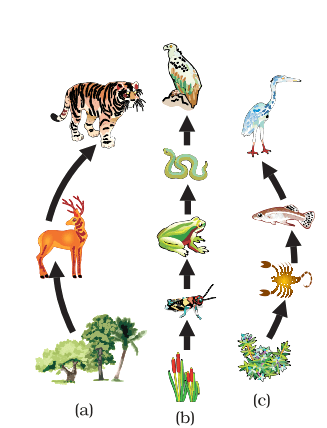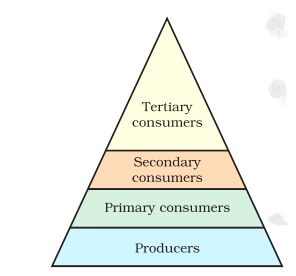NCERT Class 10 Science Chapter 13 Our Environment Notes Solution For School Students of Class 10th. We also Provides Notes and Important Questions for Class 10 Science. NCERT Class 10th Science book is applied in mostly boards like CBSE, HBSE, RBSE, Up Board, MP Board and also some other state boards.
- Also Read:- Class 10 Science NCERT Solution
- Also Read – Class 10 Important Questions
NCERT Class 10 Science Chapter 13 Our Environment Notes for CBSE, HBSE, RBSE, UK Board, HP Board, MP Board and Other Boards Solution.
Our Environment Class 10 Science Chapter 13 Notes
Ecosystem : All the interacting organisms in an area together with the non-living constituents of the environment form an ecosystem. Thus, an ecosystem consists of biotic components comprising living organisms and abiotic components comprising physical factors like temperature, rainfall, wind, soil and minerals.
Example : Forests, ponds, lakes, gardens, rivers etc.
Ecosystems can be of physical (Forests, ponds, lakes, rivers ) or artificial / man made ( gardens, crop-fields).
Producers : All green plants and certain bacteria which can produce food by photosynthesis are called producers.
Consumers : Those organisms which consume the food produced, either directly from producers or indirectly by feeding on other consumers are the consumers. Consumers can be classified as herbivores, carnivores, omnivores and parasites.
Decomposers : The microorganisms comprising bacteria and fungi which break down the complex organic substances into simple inorganic substances are called decomposers.
Food Chain : It is defined as the series or organisms taking part at various biotic levels. Each step or level of food chain forms a trophic level.

Some examples of food chain are shown in fig .
(a) Green plants → Deer → Tiger
(b) Plants → insects → Frog → Snake → Eagle
(c) algae → crab → fish → ducks
Trophic Levels : Trophic levels are the step or level of the food chain at which transfer of food (or energy) takes place from one organism to another organism.
Different Trophic levels of food chain : The autotrophs or the producers are at the first trophic level. The herbivores or the primary consumers come at second level, small carnivores or secondary consumers at the third level and large carnivores or the tertiary consumers for the fourth tropic level.

Food Web : It is defined as a series of branching lines or a series of food chain interconnected with each other.
Flow of Energy in Food Chain and Food Web :
(i) Flow of energy is unidirectional. The energy that is captured by the autotrophs does not revert back to the solar input and the energy which passes to the herbivores does not come back to autotrophs.
(ii) The energy available at each tropic level gets diminished progressively due to loss of energy at each level.
Biological Magnification : It is defined as the the process of accumulation of non-degradable chemicals in living organisms at a concentration higher than that occurring in the inorganic, non-living environment.
Ozone : Ozone (O3) is a molecule formed by three atoms of oxygen. On the ground level, Ozone is a deadly poison. At the higher levels of atmosphere, it protects the surface of the earth from ultraviolet (UV) radiation from the Sun. This radiation is highly damaging as it can cause skin cancer in human beings.
Depletion of Ozone : The use of chemicals like chlorofluorocarbons (CFCs) has endangered the ozone layer. Earlier CFCs was used in refrigerants and in the fire extinguishers. In 1987, the United Nations Environment Programme (UNEP) succeeded in forging an agreement to freeze CFC production.
Garbage Management : The waste we generate may be biodegradable or non-biodegradable. The disposal of the waste we generate is causing serious environmental problems.
Other Important :
- On an average 10% of total food consumed reaches the next level of consumes.
- Ozone is a molecule formed by the three atoms of oxygen O3.
- On ground level, Ozone is a deadly poison.
- Ozone layer is found in stratosphere.
- The higher energy UV radiations split apart some molecular oxygen (O2) into free oxygen (O) atoms.